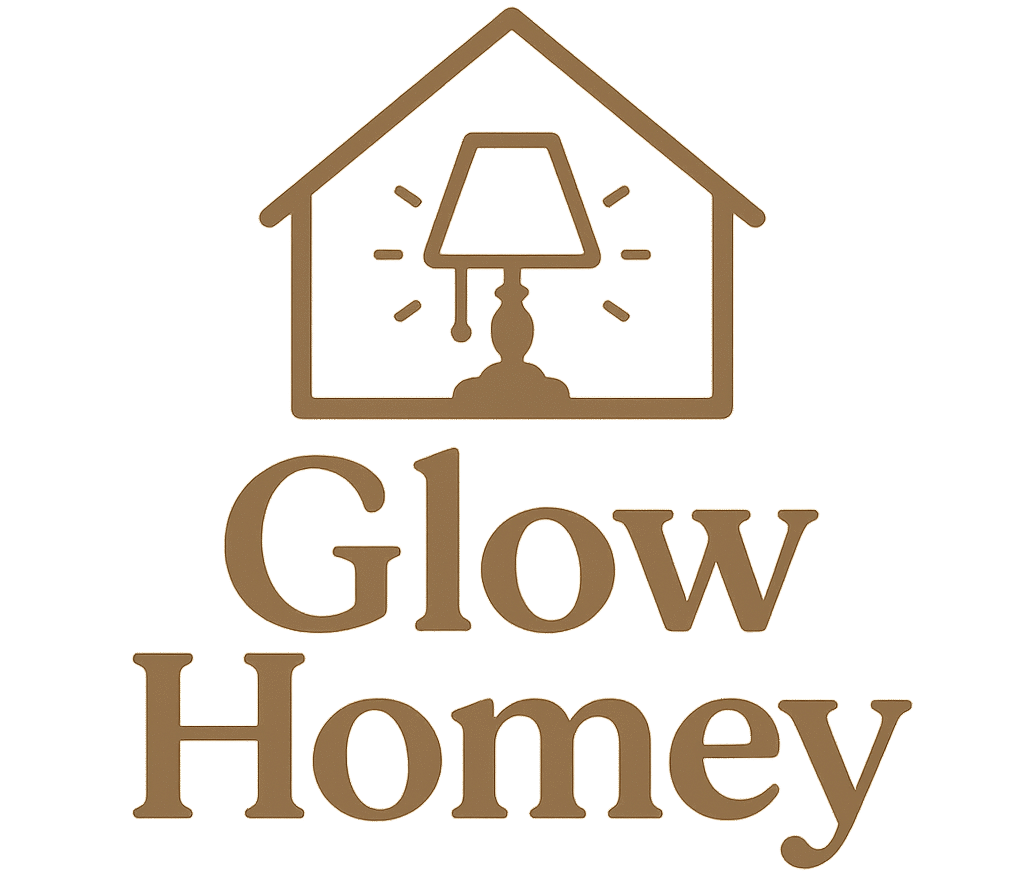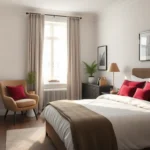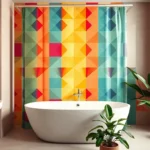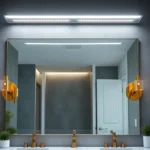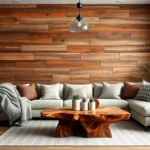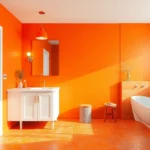We spend nearly a third of our lives at work, yet most of us settle for bland, uninspiring office spaces that drain our energy and creativity. Your workspace doesn’t have to feel like a sterile prison cell – it can become a vibrant environment that boosts productivity and makes you actually look forward to Monday mornings.
The right office decor transforms more than just aesthetics. Strategic decorating choices can reduce stress, improve focus, and create a professional atmosphere that impresses clients and colleagues alike. Whether you’re working with a tiny cubicle or designing an entire office suite, small changes can yield massive results.
We’ve compiled the most effective office decorating ideas that work within any budget and company policy. From productivity-boosting color schemes to space-maximizing furniture arrangements, these proven strategies will help you create an office environment that reflects your personality while maintaining professional standards.
Create a Productive Workspace With Strategic Lighting Solutions
Proper lighting transforms any office space from dreary to ever-changing while significantly boosting our productivity and overall well-being. Strategic illumination reduces eye strain and creates an environment where we can perform our best work throughout the day.
Natural Light Maximization Techniques
Position your desk perpendicular to windows to avoid screen glare while capturing optimal daylight exposure. This arrangement allows natural light to illuminate your workspace without creating harsh reflections on computer monitors or glossy surfaces.
Install adjustable blinds or light filtering curtains to control brightness levels throughout different times of day. These window treatments let us moderate intense afternoon sun while maintaining consistent illumination for our daily tasks.
Use mirrors strategically placed opposite or adjacent to windows to reflect natural light deeper into your office space. A well positioned mirror can double the perceived brightness and make even small workspaces feel more open and energized.
Keep window areas clear of tall furniture or decorative items that might block precious sunlight from entering your workspace. Removing obstacles near windows maximizes the natural light distribution throughout your entire office area.
Task Lighting for Focused Work Areas
Desk lamps with adjustable arms and brightness settings provide targeted illumination exactly where we need it most. LED desk lamps consume less energy while offering customizable light temperatures from warm to cool depending on our exact work requirements.
Under cabinet lighting strips illuminate keyboard areas and document spaces without casting shadows across our work surface. These slim fixtures attach easily beneath shelves or monitor stands to create focused lighting zones.
Swing arm wall mounted lights save valuable desk space while delivering precise task lighting for reading or detailed work. These fixtures adjust to multiple positions and angles to accommodate different activities throughout our workday.
Book lights or clip on LED lights offer portable task lighting answers for temporary workstations or shared office environments. These compact options provide focused illumination without requiring permanent installation or electrical modifications.
Ambient Lighting for Overall Comfort
Floor lamps with soft diffused bulbs create warm background lighting that reduces harsh contrasts between bright screens and dark surroundings. These standing fixtures complement overhead lighting while adding visual interest to office corners or seating areas.
String lights or LED strips behind monitors produce gentle backlighting that reduces eye strain during extended computer use. This indirect illumination creates a comfortable viewing environment while adding a subtle decorative element to our workspace.
Table lamps with warm white bulbs establish cozy zones within larger office spaces and provide supplemental lighting during darker months. These fixtures create inviting spots for breaks or informal meetings while maintaining professional aesthetics.
Dimmable overhead fixtures or smart bulbs allow us to adjust ambient lighting levels based on time of day or exact activities. Programmable lighting systems automatically transition from bright daytime settings to softer evening tones that support our natural circadian rhythms.
Incorporate Plants and Greenery for a Healthier Work Environment
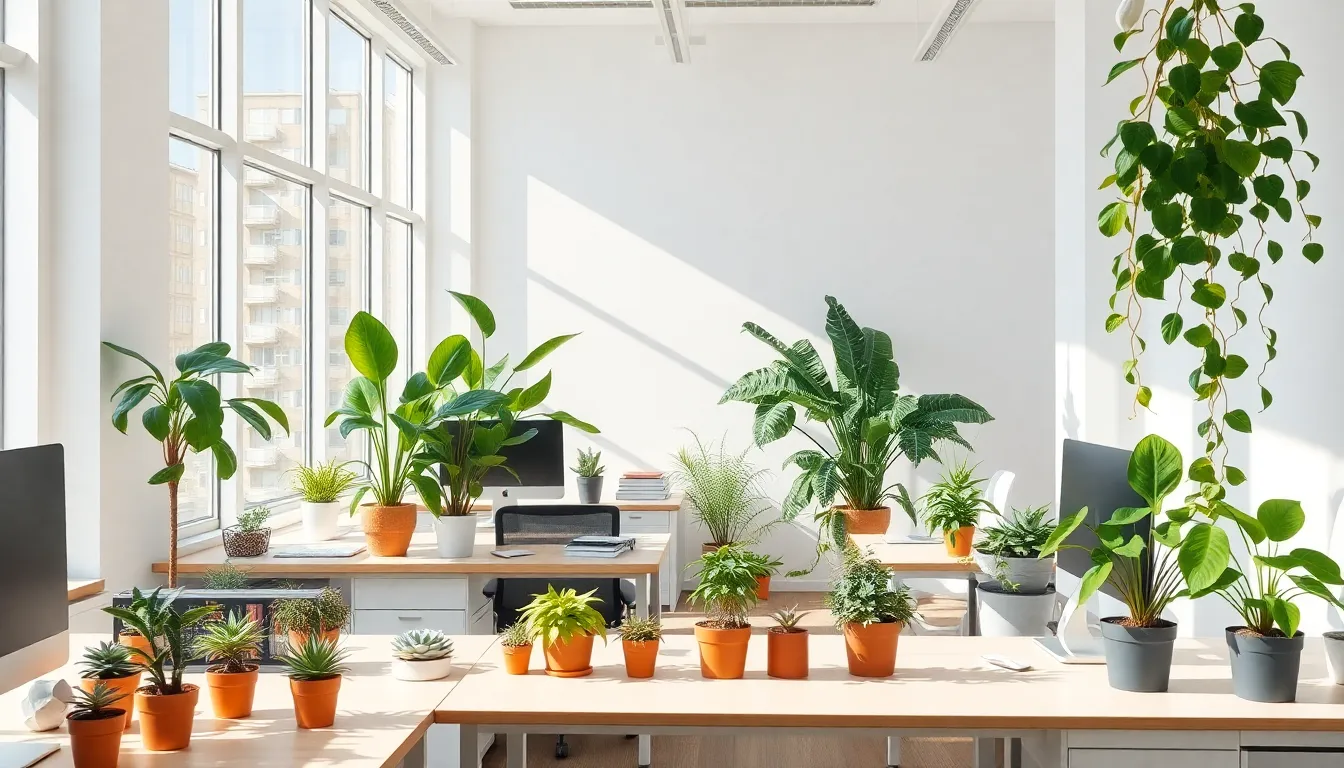
Adding plants to your workspace creates an immediate positive impact on both air quality and employee well-being. Research shows that office greenery can reduce stress, boost mood, and even stimulate creativity while contributing to a healthier and more comfortable working environment.
Low-Maintenance Desk Plants
Succulents top our list for busy professionals who want greenery without the constant care routine. These resilient plants require minimal watering and thrive in various lighting conditions, making them perfect for any desk setup.
Air plants offer another fantastic option since they don’t need soil at all. We love how they can be displayed in hanging glass orbs, mounted on walls, or simply placed in decorative containers, making them ideal for decorating small spaces and tight work areas.
Pothos deserves mention for its trailing vines that can gracefully drape from shelves or filing cabinets. This hardy plant tolerates neglect well and can grow in both bright and low light conditions.
Floor Plants for Larger Spaces
Peace lilies bring elegance to any office corner with their glossy green leaves and occasional white blooms. These plants are known for their air purifying properties and can grow up to three feet tall, creating a striking focal point in larger workspaces.
Dracaena varieties offer versatility with their upright growth pattern and colorful foliage options. We recommend these plants because they can grow quite tall and effectively improve air quality while requiring only moderate care.
Fiddle leaf figs create dramatic visual impact with their large, violin shaped leaves. Though they need consistent care, these statement plants can transform empty office corners into vibrant green spaces.
Air-Purifying Plant Options
Spider plants excel at removing air pollutants while being incredibly easy to propagate and care for. We appreciate how these plants produce small plantlets that can be shared with coworkers, creating a sense of community in the office.
Snake plants stand out for their ability to purify air and thrive in low light conditions with minimal water. These architectural plants work perfectly in offices with limited natural light or for employees who travel frequently.
Rubber trees provide excellent air filtration while adding substantial green presence to the workspace. Their thick, waxy leaves create visual interest and can grow into impressive specimens with proper care.
For those lacking gardening experience or working in spaces with limited natural light, artificial plants can add natural beauty without maintenance requirements while still providing the psychological benefits of greenery in the workspace.
Choose Colors That Boost Productivity and Mood
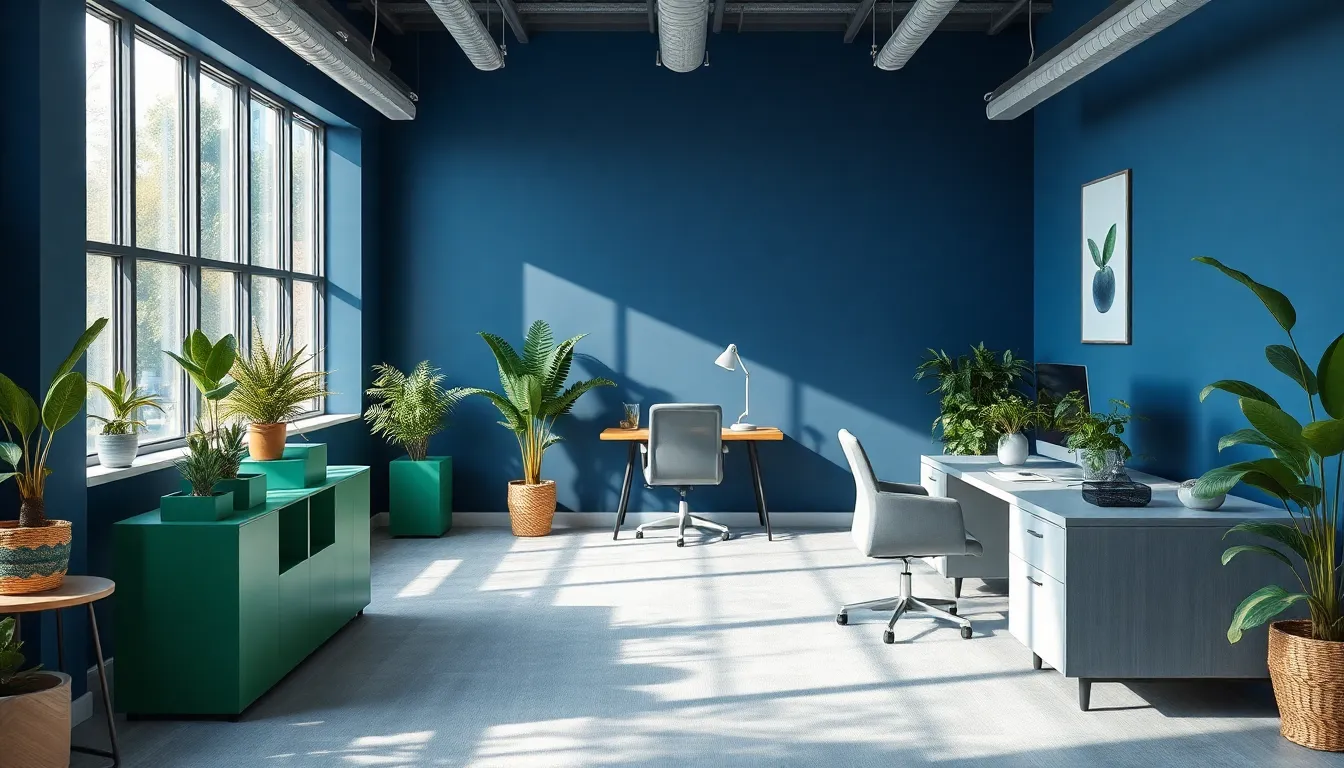
The psychological impact of color choices extends far beyond mere aesthetics in office environments. Strategic color selection can dramatically influence our focus levels, energy, and overall workplace satisfaction.
Calming Blue Tones for Focus
Blue creates an atmosphere of tranquility that enhances concentration and mental clarity in demanding work environments. Studies consistently show that blue’s calming effect helps employees maintain focus during complex tasks and reduces workplace stress. We recommend incorporating navy accent walls, soft cerulean desk accessories, or powder blue filing cabinets to harness this productivity boost.
Lighter blue shades work particularly well in spaces where analytical thinking and problem solving take priority. Medium blue tones complement technology heavy workspaces while deeper blues add sophistication to executive offices. The versatility of blue makes it an excellent primary color choice for offices where sustained concentration is crucial.
Energizing Green Accents
Green promotes both efficiency and mental rejuvenation, making it ideal for environments where teams work extended hours. This nature inspired hue encourages productivity while simultaneously providing the calming influence that prevents burnout. Forest green desk organizers, sage green wall panels, or emerald accent chairs can transform sterile workspaces into energizing environments.
The dual benefit of green lies in its ability to boost mood while maintaining focus throughout demanding workdays. Olive green complements modern office furniture while mint green adds freshness to creative spaces. Research indicates that green’s connection to nature helps employees feel more balanced and motivated during long work sessions.
Warm Neutral Palettes for Balance
Neutral colors like beige, gray, and taupe provide the foundation for balanced and professional work environments. These sophisticated hues create calming backdrops that avoid visual overload while maintaining the flexibility to incorporate accent colors. Warm taupe walls paired with charcoal furniture and cream accessories establish timeless elegance.
We can enhance neutral palettes with subtle pops of energizing colors to maintain visual interest without creating distraction. Soft gray serves as an excellent base for incorporating blue or green accents through artwork, plants, or decorative elements. The beauty of neutral foundations lies in their ability to adapt to changing design trends while consistently supporting workplace productivity.
Organize Your Space With Functional Storage Solutions
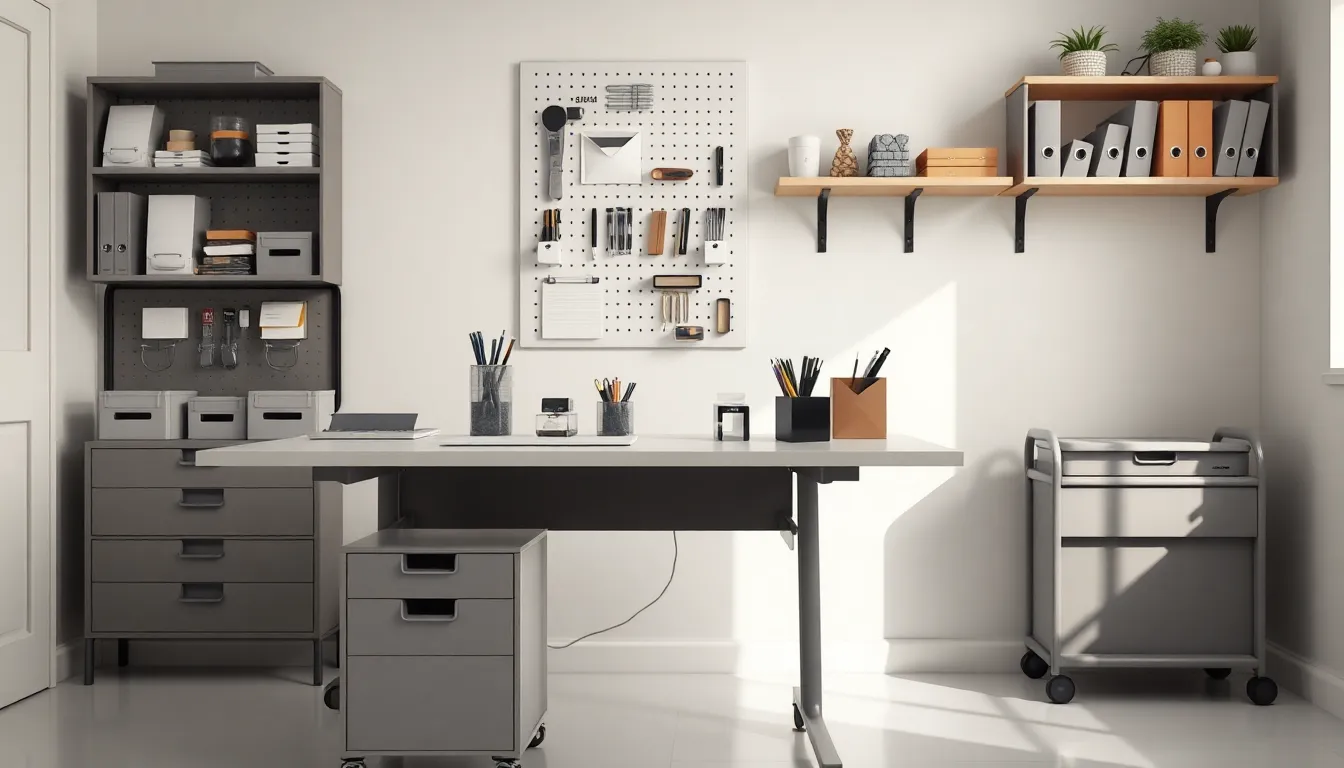
Smart storage answers transform cluttered workspaces into organized environments that enhance productivity and reduce stress. We’ll explore three key storage strategies that maximize your office space while keeping essential items easily accessible.
Desktop Organizers and Containers
Desktop organizers keep frequently used items within arm’s reach while maintaining a clean workspace. We recommend implementing trays for paperwork, pen holders for writing instruments, and paperclip containers for small office supplies to create an efficient desk system.
Stackable containers offer versatile storage for documents and supplies without consuming excessive desk space. These modular units allow you to customize your storage configuration based on your exact needs and available surface area.
File organizers positioned on your desktop provide immediate access to important documents and current projects. We find that vertical file holders work particularly well for active paperwork while horizontal trays suit reference materials and pending tasks.
Wall-Mounted Storage Systems
Wall-mounted organizers maximize vertical space and keep floor areas clear for better movement throughout your office. These systems typically include shelves, hooks, and cubbies that accommodate various office supplies and documents while adding visual interest to bare walls.
Modern wall-mounted media centers with integrated storage cabinets work exceptionally well for media-heavy offices. We’ve found these units particularly effective for storing electronic devices, cables, and technical documentation in easily accessible compartments.
Pegboards with adjustable hooks create flexible storage answers for items like paper trays, calendars, and frequently used office tools. This approach adds both decorative appeal and practical functionality while allowing you to reorganize your storage layout as needs change.
Modular wall systems enable you to mix and match components such as corkboards, letter bins, and whiteboards for customized organizational setups. We recommend starting with basic components and expanding your system as your storage requirements evolve.
Under-Desk Storage Options
Under-desk storage units use often-overlooked space beneath your work surface for supplies and less frequently used items. Drawers and shelves in this area keep materials organized and out of sight while maintaining easy access when needed.
File cabinets positioned under desks provide substantial storage capacity for important documents and reference materials. We suggest choosing units with multiple drawer sizes to accommodate various file types and office supplies efficiently.
Small storage bins placed strategically under your desk offer flexible organization for seasonal items, backup supplies, and personal belongings. These containers work particularly well for items you need occasionally but don’t want cluttering your primary workspace.
Rolling storage carts that fit beneath desks combine mobility with concealed storage, allowing you to move supplies where needed while maintaining a clean appearance. We find these especially useful for shared workspaces where storage needs vary throughout the day.
Display Personal Items That Inspire and Motivate
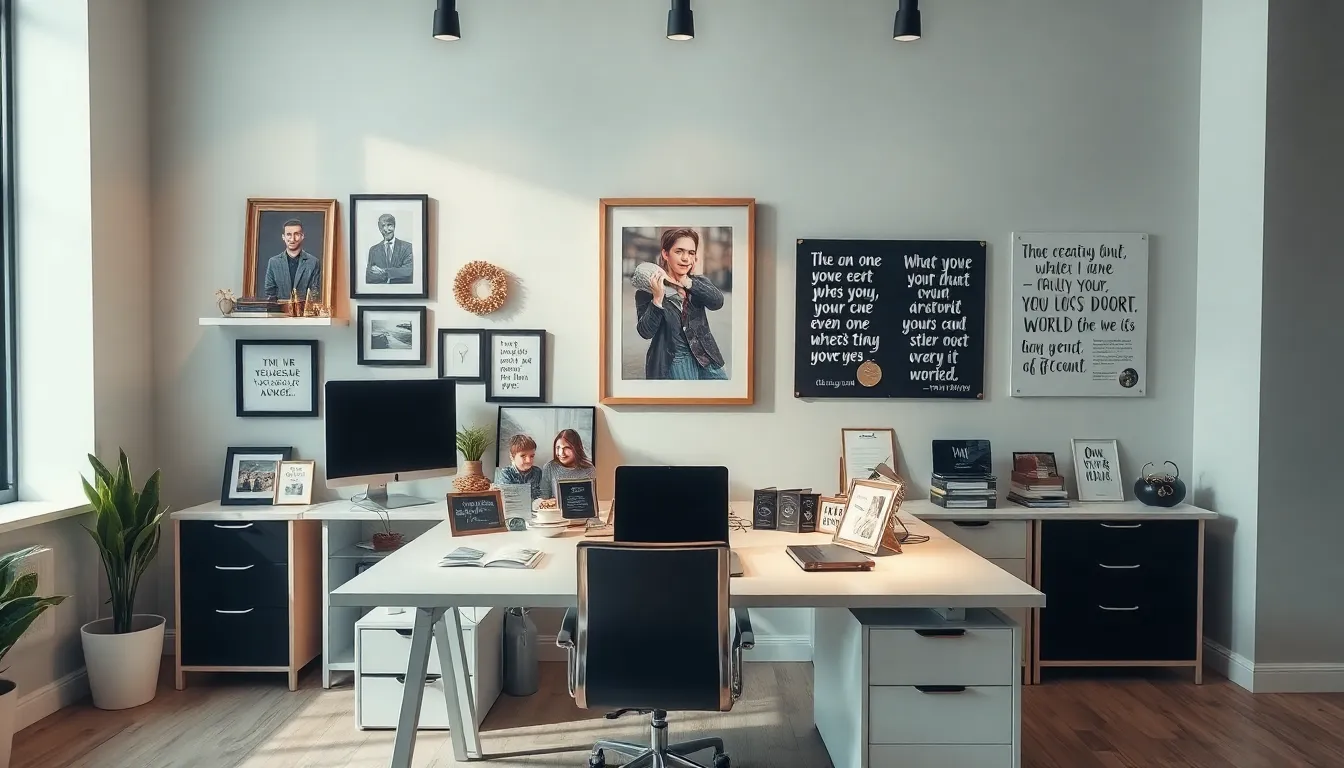
Personal items transform sterile workspaces into environments that reflect our values and aspirations. These meaningful additions create emotional connections that boost motivation and enhance our daily work experience.
Family Photos and Meaningful Artwork
Family photos create a sense of warmth and personal connection in our workspace. Displaying these cherished memories leads to increased employee satisfaction and engagement, reminding us why we work hard every day. Position family photos where they’re easily visible during stressful moments for instant mood boosting effects.
Meaningful artwork adds aesthetic value while inspiring creativity throughout our workday. Choose pieces that reflect our company’s values or mission to create alignment between personal expression and professional goals. Select artwork that sparks conversation with colleagues and clients, fostering deeper connections in our work environment.
Achievement Awards and Certificates
Achievement Awards and Certificates boost morale by recognizing our accomplishments and hard work. Display these honors prominently on our desk or wall to serve as daily reminders of our capabilities and success. Frame certificates professionally to maintain a polished appearance while celebrating our educational achievements and professional milestones.
Professional recognition becomes a powerful motivational tool when we showcase our wins. Place awards where both we and our visitors can see them, creating confidence in our abilities and expertise. Update our display regularly as we earn new certifications and achievements throughout our career.
Inspirational Quotes and Vision Boards
Inspirational quotes serve as motivational reminders that keep us focused on our goals. Place these meaningful phrases around our office space where we’ll see them during challenging moments. Choose quotes that resonate with our personal values and professional aspirations for maximum impact.
Vision boards help us visualize our future goals and maintain motivation during difficult periods. Create boards that combine professional objectives with personal dreams to maintain work life balance. Update our vision boards quarterly to reflect evolving goals and celebrate achievements we’ve already accomplished.
Add Comfort Elements to Reduce Workplace Stress
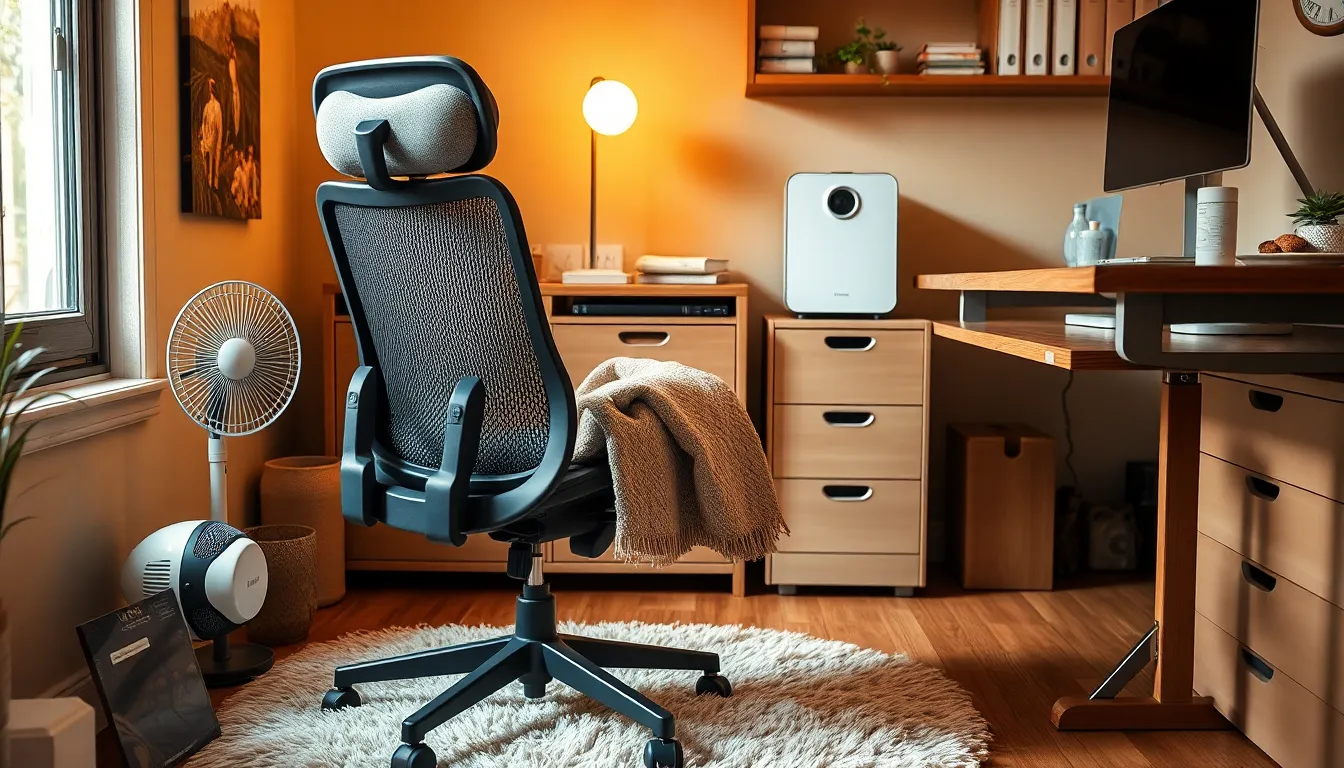
Workplace stress significantly decreases when we prioritize physical comfort in our office environments. Creating a cozy workspace through strategic comfort additions helps us maintain better focus while reducing physical strain throughout long workdays.
Ergonomic Cushions and Support
Ergonomic cushions transform uncomfortable seating into supportive workstations that protect our bodies during extended desk sessions. Seat cushions provide essential support for proper posture while reducing pressure on our tailbones and hips. Lumbar pillows target the natural curve of our spine, preventing the back pain that often develops from prolonged sitting.
Footrests elevate our legs to improve circulation and reduce strain on our lower backs. Memory foam cushions contour to our body shape, distributing weight evenly across pressure points. Wrist rests support our arms during typing and mouse work, preventing repetitive strain injuries that can develop over time.
Soft Textures and Fabrics
Soft textiles introduce warmth and visual comfort that makes our workspace feel more inviting than sterile office environments. Plush rugs under our desks create a cozy foundation while reducing noise from foot movement. Throw blankets draped over chair backs provide instant comfort during chilly office days.
Upholstered chairs with fabric surfaces feel more welcoming than hard plastic or leather alternatives. Fabric desk pads offer a softer surface for our arms while protecting desktop surfaces from scratches. Cushioned armrests wrapped in soft materials prevent our elbows from developing pressure sores during long work sessions.
Temperature Control Accessories
Temperature control devices allow us to customize our immediate environment regardless of office wide climate settings. Small desk fans provide personal airflow that keeps us cool without affecting nearby colleagues. Space heaters warm our individual workspace when central heating feels insufficient.
Personal air purifiers improve air quality while providing gentle white noise that masks distracting office sounds. Desktop humidifiers add moisture to dry office air, preventing skin irritation and respiratory discomfort. Heated seat cushions offer targeted warmth that helps us stay comfortable without raising the temperature for others.
| Comfort Element | Primary Benefit | Secondary Advantage |
|---|---|---|
| Ergonomic support items | Reduces physical strain and pain | Improves posture and productivity |
| Soft textiles and fabrics | Creates warm, inviting atmosphere | Reduces stress through sensory comfort |
| Temperature control accessories | Enables personal climate adjustment | Increases focus through physical comfort |
Utilize Wall Space for Both Function and Style

Wall space offers untapped potential for creating an office that’s both highly functional and visually appealing. We can transform bland vertical surfaces into productive zones that enhance our daily workflow while expressing our personal style.
Cork Boards and Magnetic Boards
Cork boards provide an essential surface for pinning notes, memos, and reminders while keeping important information visible and organized throughout our workday. These practical answers help us maintain a clutter-free desk by moving visual reminders to eye level where we can’t miss them.
Magnetic boards offer similar utility and can be paired with colorful magnets for attaching documents or decorative items that inspire us. Both options save valuable desk space and help maintain a tidy, efficient workspace that supports our productivity goals.
Position these boards at eye level within arm’s reach of our primary work area to maximize their effectiveness. We can choose frames that complement our office’s color scheme or select sizes that fit perfectly in available wall space.
Floating Shelves for Display
Floating shelves are ideal for small offices or cubicles as they create storage and display surfaces without occupying precious floor space. We can use them strategically for books, plants, framed photos, or frequently accessed office supplies that need to stay within easy reach.
These versatile shelves add vertical interest to our workspace while contributing to a streamlined workflow that keeps us organized. Install them at varying heights to create visual depth and accommodate different types of items we want to display or store.
Consider the weight capacity when selecting floating shelves and ensure they’re properly anchored to support our chosen items. We should group similar objects together and leave some breathing room between displays to avoid a cluttered appearance.
Wall Art and Decorative Elements
Wall art such as framed prints, inspirational quotes, or personal photos adds personality to our office while creating a more inviting work environment. Decorative elements like peel and stick wallpaper or removable decals can transform a plain wall into a visually captivating backdrop that motivates us daily.
These personal touches make our environment more welcoming and can boost both our motivation and productivity throughout the workweek. Choose pieces that reflect our professional goals or personal values to create meaningful connections with our workspace.
Trailing plants or faux greenery introduce movement and a touch of nature that’s ideal for spaces with limited natural light. Small accent colors or coordinated elements provide warmth and a sense of individuality while maintaining a professional appearance that impresses clients and colleagues.
Invest in Quality Desk Accessories That Enhance Efficiency

Well-chosen desk accessories transform cluttered workspaces into organized, professional environments that boost daily productivity. Quality organizational tools serve dual purposes by maintaining order while adding aesthetic appeal to our workspace design.
Stylish Pen Holders and Paper Trays
Pen holders eliminate the frustration of searching for writing tools when we need them most during important meetings or deadline-driven tasks. Modern designs like bamboo organizers, metal mesh containers, and ceramic vessels add sophisticated touches while keeping pens, pencils, and markers easily accessible. We should choose holders with multiple compartments to separate different writing instruments and small office supplies.
Paper trays create structured systems for managing documents and prevent important papers from disappearing beneath desk clutter. Stackable designs in materials like acrylic, wood, or metal maximize vertical space while maintaining clean desk surfaces. Professional-grade trays with labeled sections help us categorize incoming mail, pending projects, and completed work for streamlined workflow management.
Cable Management Answers
Cable organizers minimize visual distractions that occur when charging cords, computer cables, and power strips create tangled messes around our workspace. Under-desk cable trays, adhesive cord clips, and spiral cable wraps keep essential connections organized while maintaining professional appearances. We can install grommets in desk surfaces to route cables cleanly from desktop devices to power sources below.
Cord management systems reduce safety hazards and prevent accidental disconnections that disrupt important work sessions. Weighted cable holders keep frequently used charging cables within easy reach without allowing them to fall behind desks. Desktop cable management boxes conceal power strips and excess cord lengths while providing convenient access to multiple charging ports.
Desktop Calendars and Planning Tools
Desktop calendars provide immediate visual references for scheduling appointments, tracking deadlines, and planning project timelines without requiring digital device access. Large format desk pads with monthly layouts offer ample writing space for notes, reminders, and quick calculations throughout busy workdays. We should select calendars with tear-off sheets or erasable surfaces that accommodate changing schedules and evolving priorities.
Planning tools like desktop organizers enhance daily productivity by keeping essential items like sticky notes, paper clips, and business cards within arm’s reach. Multi-compartment desk caddies with rotating features maximize storage capacity while minimizing desktop footprint. Combination organizers that include pen holders, paper trays, and small drawers create comprehensive workspace answers that support efficient task management and professional organization.
Create Designated Zones for Different Work Activities
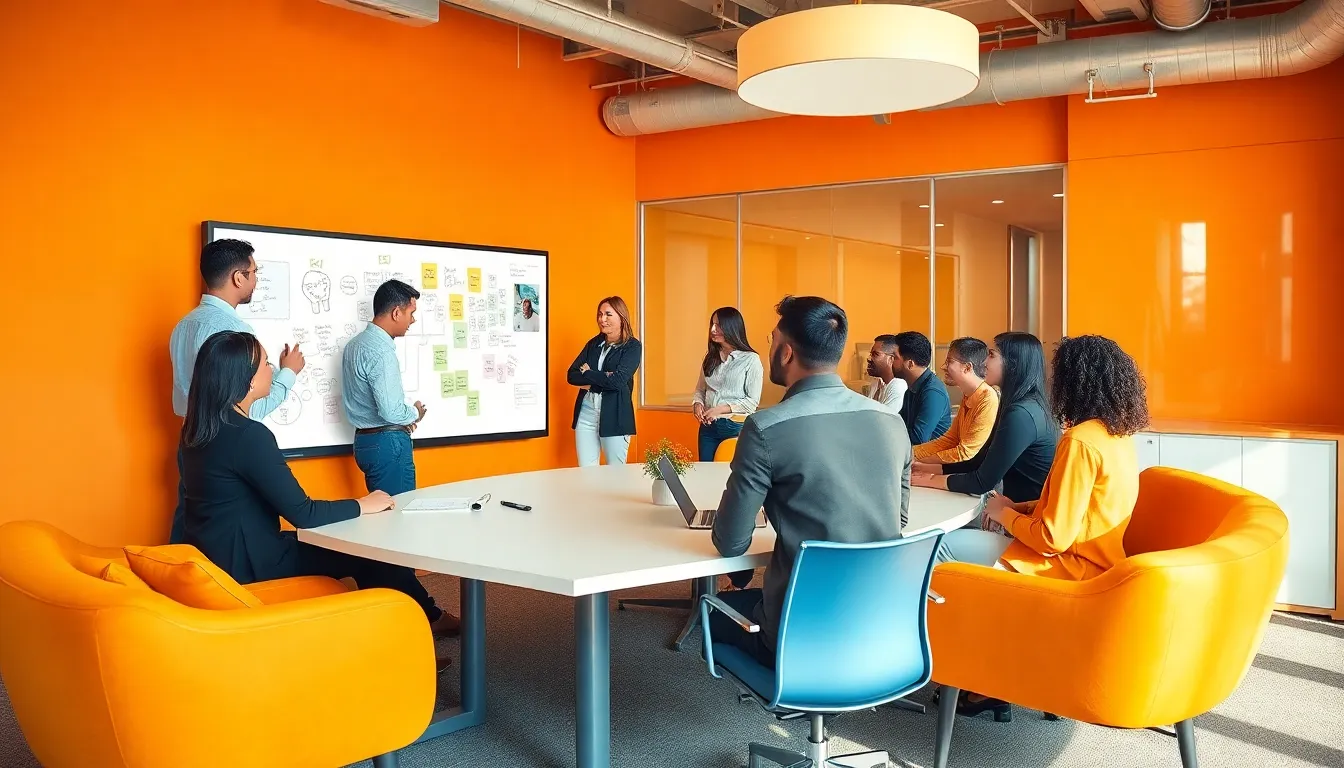
Modern workplaces benefit tremendously from thoughtfully designed zones that cater to different work styles and activities. We can transform our office environments by establishing distinct areas that support various professional tasks and employee needs.
Meeting and Collaboration Areas
Vibrant meeting spaces should incorporate comfortable seating arrangements that encourage team interaction and creative dialogue. We recommend positioning interactive whiteboards strategically throughout these areas to help brainstorming sessions and project planning. Warm colors like energetic oranges and inviting yellows help foster team spirit while promoting collaborative thinking.
Versatile lighting systems allow us to adjust brightness levels based on the type of meeting or presentation taking place. Soft ambient lighting creates intimate discussion environments, while brighter task lighting supports detailed project work and note-taking activities.
Flexible furniture arrangements enable teams to reconfigure spaces quickly for different group sizes and meeting formats. Modular seating options, moveable tables, and rolling whiteboards provide the adaptability that modern collaborative work demands.
Quiet Focus Zones
Minimal distraction environments form the foundation of effective quiet zones where employees can concentrate on detailed tasks. We should incorporate noise-reducing materials like acoustic panels, sound-absorbing desk dividers, and soft furnishings to create peaceful work sanctuaries.
Calming blue tones enhance focus and concentration levels according to color psychology research, making them ideal choices for these dedicated work areas. Cool grays and soft whites complement blue accents while maintaining the serene atmosphere necessary for deep work.
Ergonomic furniture selections include adjustable desks and supportive chairs that promote proper posture during extended focus sessions. Dimmable lighting fixtures allow individual control over illumination levels, accommodating different visual preferences and task requirements.
Break and Relaxation Spaces
Comfortable seating options like plush armchairs, casual lounge furniture, and cozy reading nooks provide employees with inviting spaces to unwind and recharge. We can create these essential respite areas using soft textiles, throw pillows, and warm blankets that encourage relaxation.
Natural elements including live plants or high-quality artificial alternatives improve both aesthetic appeal and air quality in break areas. Spider plants, peace lilies, and fiddle leaf figs add visual interest while creating connections to the natural industry that help reduce workplace stress.
Ambient lighting answers such as table lamps, string lights, and soft overhead fixtures create warm, welcoming atmospheres that contrast with the brighter task lighting found in work zones. These gentle illumination sources help employees mentally transition from work mode to relaxation time.
Conclusion
We’ve covered a comprehensive range of office decorating strategies that can transform any workspace into a more productive and enjoyable environment. Remember that small changes often make the biggest impact – whether it’s adding a single plant or reorganizing your desk accessories.
The key is to start with one or two elements that resonate most with your work style and budget. As you carry out these ideas you’ll likely discover which approaches work best for your exact needs and company culture.
Creating an inspiring office space isn’t just about aesthetics – it’s an investment in your daily productivity and overall job satisfaction. Take the first step today and begin building the workspace that’ll keep you motivated and focused throughout your career.
Frequently Asked Questions
How can office decoration impact productivity and well-being?
A well-decorated office space can significantly enhance productivity, reduce stress levels, and create a more enjoyable work environment. Strategic decoration choices help transform dreary workspaces into dynamic, inspiring areas that boost morale and impress clients. The visual appeal of a thoughtfully designed office contributes to better focus, increased motivation, and overall job satisfaction for employees.
What are the best lighting strategies for office spaces?
Effective office lighting combines natural light maximization, task lighting, and ambient lighting. Position desks to avoid glare while capturing natural light, use adjustable desk lamps for focused work, and incorporate floor lamps or string lights for overall comfort. Dimmable fixtures allow flexibility throughout the day, creating a warm and inviting atmosphere that supports productivity.
Which plants work best for office environments?
Low-maintenance options like succulents, air plants, spider plants, and snake plants are ideal for busy professionals. For larger spaces, consider peace lilies or fiddle leaf figs. These plants not only reduce stress and boost creativity but also purify the air. Artificial plants offer a maintenance-free alternative while still providing the psychological benefits of greenery.
How do color choices affect workplace performance?
Strategic color selection significantly influences focus, energy, and workplace satisfaction. Blue tones enhance concentration and mental clarity, green accents promote efficiency and mental rejuvenation, while warm neutrals create balanced, professional environments. These color strategies support productivity while maintaining visual appeal, contributing to a more positive and effective work atmosphere.
What storage solutions help maintain an organized office?
Three key storage strategies include desktop organizers for frequently used items, wall-mounted systems that maximize vertical space, and under-desk storage units for supplies and documents. These solutions reduce clutter, enhance productivity, and keep workspaces tidy while ensuring easy access to necessary materials throughout the workday.
Should I display personal items in my office space?
Yes, personal items like family photos, meaningful artwork, achievement awards, and inspirational quotes can enhance your work experience. These displays create emotional connections, boost morale, and serve as daily motivation reminders. Personal touches help maintain focus on goals while making the workspace feel more welcoming and reflective of your values.
What comfort elements can reduce workplace stress?
Ergonomic cushions and support items improve physical comfort and posture, while soft textiles create a warm atmosphere. Temperature control accessories allow for personal climate adjustments. These comfort additions reduce physical strain, improve focus, and contribute to a more enjoyable work environment that supports long-term productivity and well-being.
How can I maximize wall space for both function and style?
Utilize cork boards and magnetic boards for organizing notes while keeping desks clutter-free. Install floating shelves for storage and display without using floor space. Add wall art and decorative elements that reflect your professional goals and values, creating a welcoming atmosphere that combines functionality with personal expression.
What desk accessories are worth investing in for better efficiency?
Quality desk accessories include stylish pen holders and paper trays for organizing writing tools and documents, cable management solutions to minimize visual distractions and safety hazards, and desktop calendars or planning tools for immediate scheduling references. These investments enhance organization and create a more professional, efficient workspace.
How can I create different functional zones in my office?
Designate specific areas for different activities: vibrant meeting spaces with comfortable seating for collaboration, quiet focus zones with calming colors and ergonomic furniture for concentration, and break areas with comfortable seating and natural elements for relaxation. This zoning approach caters to various work needs while promoting productivity and well-being.
